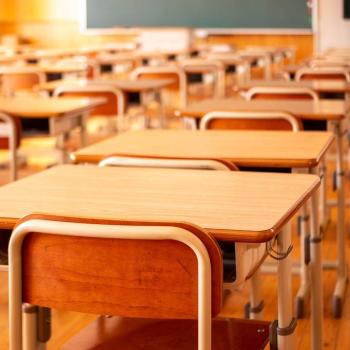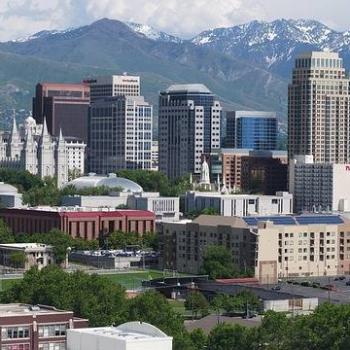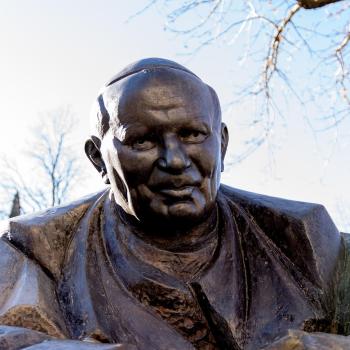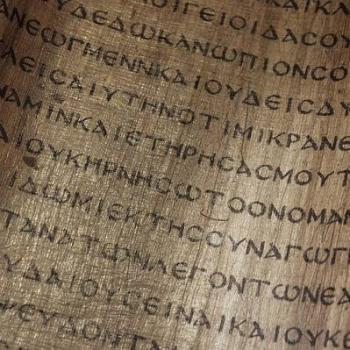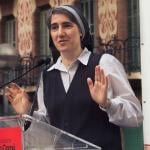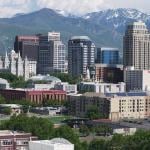THE QUESTION:
Where is Islam heading in the U.K. (and what about the U.S.)?
THE RELIGION GUY’S ANSWER:
As in the United States, the Muslim minority population is growing steadily in the United Kingdom, up 107% since 2001 to exceed 3 million — even as participation in many Christian churches declines. British society will be reshaped by the inner workings among followers of the world’s second-largest religion. That underscores the importance of the new book “Among the Mosques: A Journey Across Muslim Britain” (Bloomsbury) by Ed Husain, See https://www.bloomsbury.com/uk/among-the-mosques-9781526618658/.
This depiction of Britain is rather unnerving, though France apparently faces a more fraught situation. There the enforcement of “laicite,” rigid separation of religion from the state originally aimed at Christianity, limits sensitivity to Muslim concerns and adds to long-running alienation and failure to assimilate. Current disputes, for instance, involve public schools’ headscarf bans and unwillingness to provide alternatives to pork on cafeteria menus.
British author Husain is a practicing Muslim, political consultant and adjunct professor at America’s Georgetown University. A sympathizer with militant “Islamism” in his younger days, he now advocates a tolerant and modernized form of the faith and that shapes his narrative.
Just before COVID hit, Husain toured London and five other cities in England, two in Scotland, and one each in Wales and Northern Ireland, mingling with fellow believers and non-Muslims at the grass roots to discern trends. His knowledge of the faith, reputation as an author on Islam, study overseas, and command of languages like Arabic and Urdu aided the sort of access denied to outside investigators.
While older British Muslims tended to assimilate, he found, many more recent immigrants are suspicious or hostile toward their adopted nation and their neighbors, isolating to create what’s somewhat a country within a country. This is especially pronounced among immigrants from India and Pakistan, with their history of problematic British colonial rule.
Two militant revivalist organizations that spurn modernization stand out. Tableeghi Jamaat is the missionary agency of the huge international Deobandi movement, which originated to resist British rule in India. It apparently controls a majority of Britain’s mosques. The Barelwis, formed in India by Ahmad Raza to oppose the Deobandis, follow the authoritarian leadership of Sufi teachers. Both groups exercise life-enveloping influence over their adherents.
Though each town, mosque and individual may differ, Husain reports that the growing power belongs to those who are largely hostile to Britain’s traditional rule of law, individual rights, and gender equality. Instead, many simply yearn for Muslim rule under the coming caliphate. As the father of two daughters, Husain is especially upset over the status of women in these religious enclaves. For example, young women are often compelled to undergo religious marriages that are not registered with the government, which later can strip their rights in disputes over divorce, custody, or inheritance. They’re often excluded from the Friday Jumah prayer service.
One problem with Husain as observer is that his anxiety mingles many aspects of Muslim life. The rejectionist stance just mentioned profoundly endangers the national unity and heritage. Less political practices simply perpetuate the most conservative variant of Islam, for instance rejection of music or expecting women not to shake hands with men outside the family or not to look them directly in the eye. Beyond that, bonds of old-country language or attire characterize new immigrants in most nations.
How does Britain compare with the United States? On that, we just received an important once-per-decade survey sponsored by the Faith Communities Today project at Hartford Seminary, from a team led by Ihsan Bagby of the University of Kentucky. Full findings are here: www.ispu.org/wp-content/uploads/2021/07/ISPU_American-Mosque-Report-1.pdf?x46312/
Bagby does not examine the prevalence of Muslim nationalism, isolationism and fundamentalism that so worries Husain. But signs of American difference include that women are attending U.S. mosques more frequently, 77% of mosques sponsor women’s groups, and 61% report women have served on their governing boards in the past five years. At 72% of U.S. mosques, English is now the primary language used in sermons versus 53% in the 2000 survey. Today, 22% of full-time imams are American-born compared with 15% in 2010. And the typical mosque is run by lay boards rather than the imam, who is relegated to a teaching role. Though assimilating, 51% of the nation’s Muslims are still foreign-born first-generation immigrants.
The U.S. situation is helped by lack of past American colonies in the Muslim world, the American Muslims’ relatively high socio-economic status, and the weakness of the hard-line international movements that alarm Husain. Edward Curtis’s history of Muslims in America observes that in the 20th Century they “crafted an Islam that celebrated American patriotism and cultural integration” and succeeded economically. A 1997 study of immigrants from India (including many Muslims) showed they had the highest incomes, the most college graduates and the most managerial or professional job-holders of all foreign-born groups.
Muslim growth has been steady since America abolished national quotas for immigration in 1965, this combined with high birth rates. There’s been a 31% increase in mosques, to 2,769, over the past decade. Based on reported Friday attendance, Bagby estimates 4 million are involved in mosques or Muslim centers, double the headcount in 2000. (Note that this project surveyed only mainstream Sunni and Shia Islam and excluded Ahmadiyyas, Ismailis, Moorish Science and Louis Farrakhan’s cultic Nation of Islam.)
Bagby’s most significant finding is a dramatic shrinkage of African-American Islam, from 23% of U.S. mosques in 2010 to the current 13%. In 2010, 23% of mosque attenders were African-American and now only 15%. That plays into the fact that U.S. Muslims are becoming suburbanites. In 2010, 17% of mosques were in downtown areas of cities but now that describes only 6%. And this obviously plays into the prospects of African-American Protestant churches.



